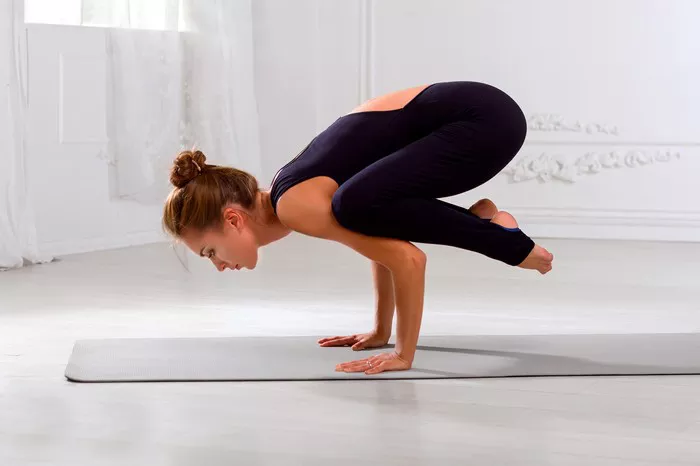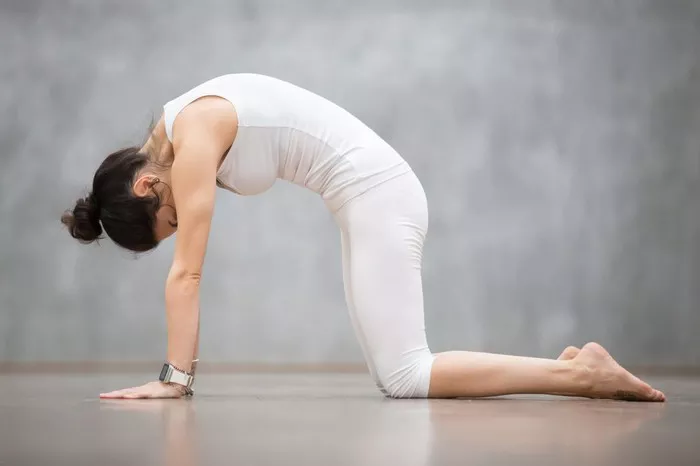Yoga, an ancient practice originating from the Indian subcontinent, has transcended centuries and borders, becoming a global phenomenon celebrated for its myriad physical, mental, and spiritual benefits. Among the diverse array of yoga poses, or asanas, crow pose stands out as a quintessential posture that challenges practitioners both physically and mentally. Bakasana, as it’s known in Sanskrit, requires strength, balance, and focus, making it a cornerstone of many yoga practices. In this comprehensive guide, we delve into the intricacies of crow pose, exploring its benefits, variations, and techniques to help practitioners unlock its full potential.
Understanding the Essence of Crow Pose
Crow pose, also referred to as crane pose, is a foundational arm balance pose that targets the arms, wrists, core, and hip flexors. While it may appear intimidating to beginners, with dedication and practice, mastering crow pose is attainable for practitioners of all levels. At its core, crow pose combines elements of strength, balance, and concentration, making it a holistic posture that not only builds physical prowess but also cultivates mental resilience and focus.
Benefits of Crow Pose
Physical Benefits:
Strengthens the Upper Body: Crow pose predominantly targets the muscles of the arms, shoulders, and chest, helping to build upper body strength and stability.
Improves Core Strength: Engaging the core muscles is essential to maintain balance in crow pose, leading to enhanced core strength and endurance over time.
Enhances Flexibility: Regular practice of crow pose can improve flexibility in the wrists, hip flexors, and groin, aiding in overall mobility and range of motion.
Stimulates Digestion: The compression of the abdominal organs in crow pose can aid in digestion and alleviate digestive discomfort.
Mental Benefits:
Develops Focus and Concentration: Balancing on the hands requires unwavering concentration, helping to cultivate mental focus and presence.
Builds Confidence: Mastering crow pose instills a sense of accomplishment and confidence, both on and off the mat, as practitioners push past their perceived limitations.
Promotes Mind-Body Connection: The integration of breath, movement, and mindfulness in crow pose fosters a deeper connection between the mind and body, promoting holistic well-being.
Preparing for Crow Pose
Before attempting crow pose, it’s essential to warm up the body and prepare the muscles and joints for the challenge ahead. A sequence of dynamic stretches and poses targeting the wrists, arms, core, and hip flexors can help prime the body for crow pose while reducing the risk of injury. Incorporating poses such as downward-facing dog, plank pose, and low lunges into your warm-up routine can help prepare the body for the demands of crow pose.
Mastering Crow Pose: Step-by-Step Guide
1. Establish a Stable Foundation:
- Begin in a squat position with your feet hip-width apart, toes pointing slightly outwards.
- Place your hands shoulder-width apart on the mat, spreading your fingers wide for optimal stability.
- Ground down through the palms of your hands, pressing firmly into the mat to create a strong foundation.
2. Engage the Core Muscles:
- Draw your navel towards your spine to engage the core muscles, creating a firm and stable midsection.
- Keep the core engaged throughout the pose to support the spine and maintain balance.
3. Shift Your Weight Forward:
- Gently shift your weight onto your hands, leaning forward to bring your knees towards the back of your upper arms.
- Keep the elbows slightly bent, creating a shelf for your knees to rest on.
4. Lift Your Feet Off the Ground:
- With control and awareness, begin to lift one foot off the ground, then the other, bringing your shins parallel to the mat.
- Press through the palms of your hands to lift the hips higher, creating space for the feet to hover off the ground.
5. Find Your Balance:
- Once both feet are off the ground, focus on finding your balance in crow pose.
- Keep your gaze slightly forward, maintaining a steady drishti (focused gaze) to help stabilize the pose.
6. Hold and Breathe:
- Hold crow pose for several breaths, maintaining a steady breath pattern to calm the mind and body.
- Focus on drawing energy up through the core and extending through the fingertips to create a sense of lightness and lift in the pose.
7. Release with Control:
- To release from crow pose, lower the feet back to the mat with control, returning to a squat position.
- Take a moment to rest and reset before repeating the pose or transitioning into your next sequence.
Variations and Modifications
1. Supported Crow Pose: Place a block or bolster under your forehead to provide support and stability as you work on building strength and confidence in crow pose.
2. One-Legged Crow Pose: Once comfortable in traditional crow pose, experiment with lifting one leg off the ground, extending it straight back behind you while maintaining balance on the arms.
3. Side Crow Pose (Parsva Bakasana): From crow pose, twist the torso to one side, hooking one knee over the opposite elbow while extending the other leg out to the side.
Common Challenges and Solutions
1. Challenge: Fear of Falling Forward
Solution: Start by practicing crow pose with a cushion or bolster placed in front of you to alleviate the fear of falling forward. With time and practice, you’ll build the confidence to balance without the support.
2. Challenge: Wrist Discomfort
Solution: Warm up the wrists with gentle stretches and wrist rotations before attempting crow pose. Additionally, distribute your weight evenly through the palms of your hands and avoid dumping weight into the wrists to reduce discomfort.
3. Challenge: Lack of Core Strength
Solution: Incorporate core-strengthening exercises such as plank pose, boat pose, and forearm plank into your regular yoga practice to build the necessary strength for crow pose.
Conclusion
Crow pose, with its blend of strength, balance, and focus, serves as a gateway to deeper exploration within the realm of yoga. As practitioners embark on the journey to master Bakasana, they not only cultivate physical prowess but also nurture mental resilience and concentration. With patience, practice, and perseverance, crow pose unveils the transformative power of yoga, inviting practitioners to soar to new heights both on and off the mat.
FAQs:
What is the difference between Crow and Crane pose?
The main difference between Crow and Crane pose lies in the arm positioning. In Crow pose (Bakasana), the arms are bent, with the knees resting on the backs of the upper arms, while in Crane pose (Bakasana II), the arms are straight, with the knees positioned higher up on the triceps.
Is Crow a beginner yoga pose?
Crow pose is often considered an intermediate yoga pose due to the need for arm strength and balance. However, beginners can practice variations of Crow pose to build strength gradually, such as using yoga blocks or keeping the toes on the ground for support.
How long should you stay in crow pose?
Beginners may start by holding Crow pose for a few breaths, aiming to gradually increase the duration as they build strength and confidence. Ideally, staying in Crow pose for 10-30 seconds is a good starting point, but individuals should listen to their bodies and avoid overexertion.























